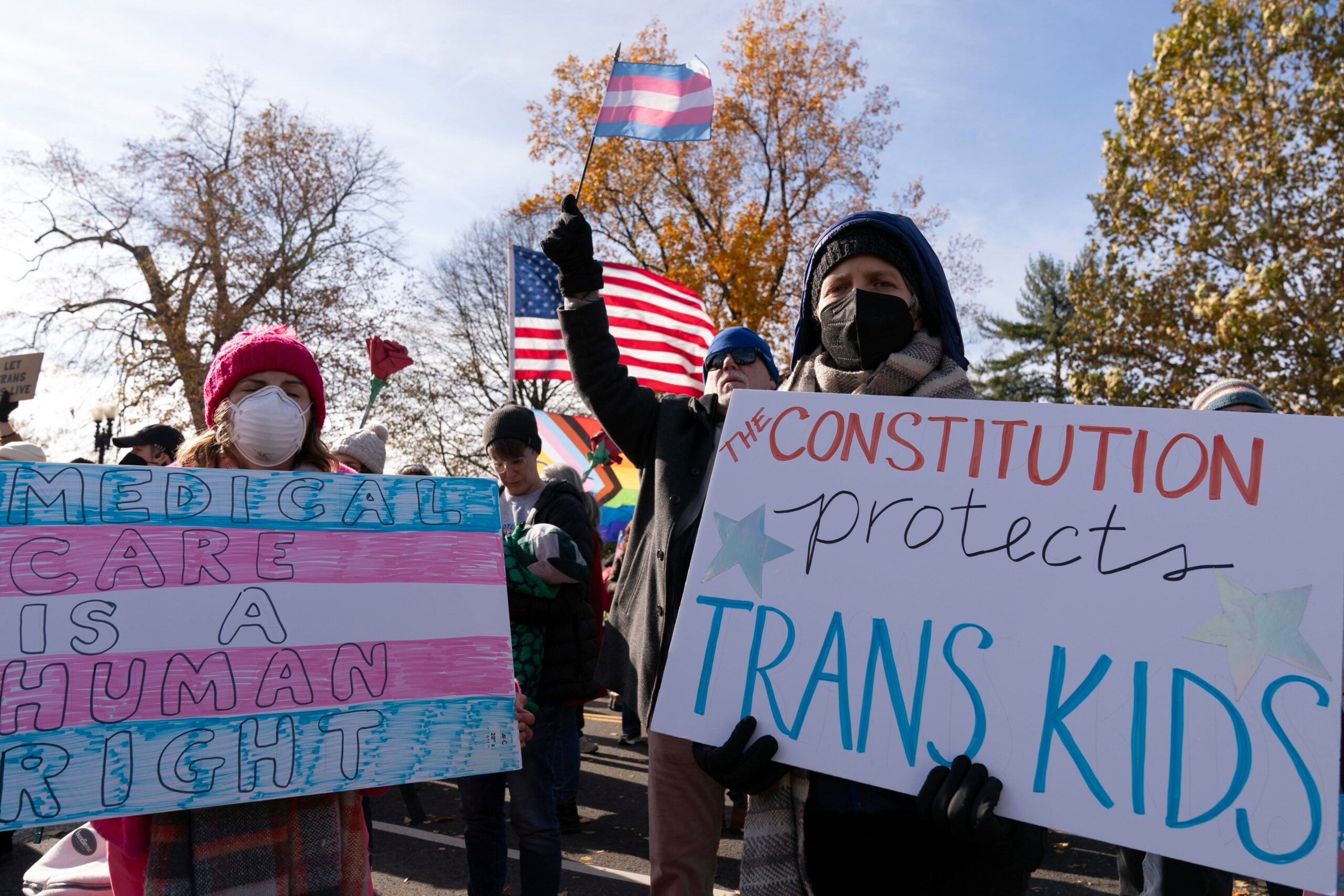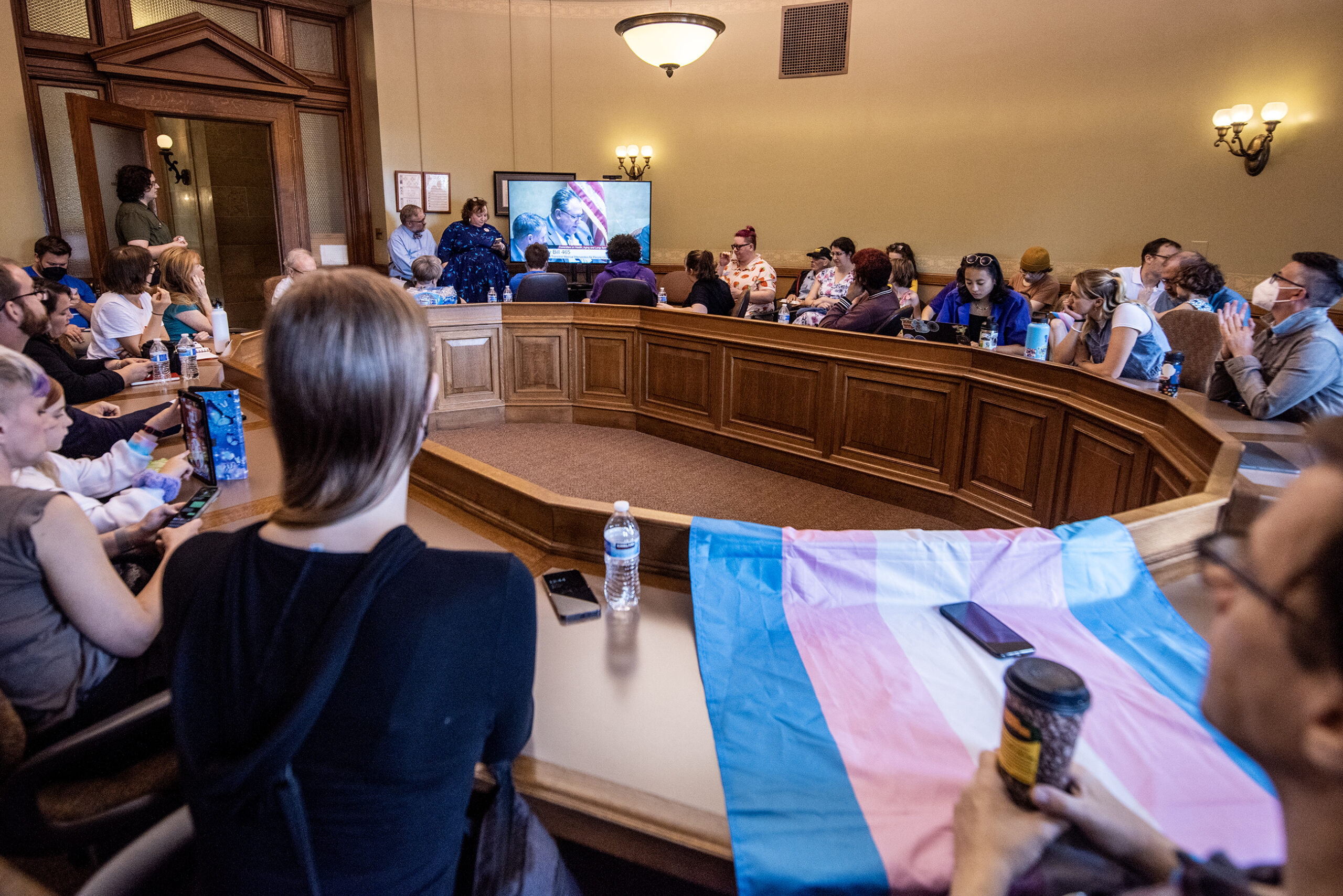Transgender people have gender identities that don’t align with the sex a doctor assigned at birth based on external anatomy. Their identities are a natural and normal variation of human experience that has existed across the globe for millennia.
The population of American transgender people, while growing, remains tiny — just 0.5 percent of adults and 1.4 percent of youth ages 13 to 17, estimates The Williams Institute at UCLA School of Law, a leading researcher for LGBTQ+ people.
A landmark study recently showed that it is exceedingly rare for trans youth who socially transitioned as children to regret their choice and “detransition.”
News with a little more humanity
WPR’s “Wisconsin Today” newsletter keeps you connected to the state you love without feeling overwhelmed. No paywall. No agenda. No corporate filter.
Some transgender people may have gender dysphoria, a diagnosis for distress caused by a conflict between a person’s gender identity and sex assigned at birth. The only evidence-based treatment for this condition, endorsed by every major medical association in the United States, is gender-affirming care.
Gender-affirming care refers to a process of social, legal and medical steps a trans person may take to live authentically. It is nonlinear and varies by person depending on their wants and needs.
Republicans have recently circulated a proposal to ban gender-affirming care for youth under 18 in Wisconsin. Here’s what this care currently looks like.
Early childhood
Gender-affirming care does not include any medical treatment until a person reaches puberty.
For young transgender children, gender-affirming care may entail:
- Visiting one of Wisconsin’s two clinics dedicated to transgender youth, at Children’s Wisconsin and UW Health. Doctors teach families about gender identity, connect them with resources and support groups, preview possible future treatments and discuss how to support their child as they grow and explore their identity.
- Reading developmentally appropriate books that discuss gender identity.
- Social transition, which can include changing a child’s name, pronouns, haircut or clothes to align with how they feel inside.
- Attending mental health counseling.
- Receiving support, affirmation and love from parents, family and peers as children grow and explore their identities.
Research shows that trans youth who are accepted and affirmed are safer and happier.
The Trevor Project, which works to end LGBTQ+ youth suicide, found that trans and nonbinary youth who report all or most people respect their pronouns attempt suicide at half the rate of those whose pronouns are ignored.
A peer-reviewed study found that trans and nonbinary youth who got to use their chosen name in multiple contexts suffered less depression, suicidal ideation and attempts.
Another found that trans youth who socially transitioned before puberty had much lower mental health problems than trans youth who do not socially transition.
Puberty
When young people reach puberty and their bodies begin to change, so does the gender-affirming care available to them and the steps they may take to affirm their gender.
Medical treatment first becomes available at this stage, and only if a youth has been diagnosed with gender incongruence by a health care professional.
Here’s what gender-affirming care may look like for transgender youth going through puberty:
- For transmasculine youth, wearing a binder helps flatten a person’s chest. For transfeminine youth, care may include learning about safe genital tucking. The Trevor Project found that trans and nonbinary youth who accessed binders and other forms of gender-affirming clothing reported lower rates of suicide than trans youth without access.
- Visiting one of Wisconsin’s two youth gender clinics for a comprehensive biopsychosocial assessment.
- Taking puberty blockers, doctor-prescribed medications that “pause” puberty by blocking sex hormones that develop secondary sex characteristics such as breasts or body hair.
- Blockers have been prescribed for cisgender children going through early puberty, as well as transgender children, for years. Medical literature first mentioned puberty blockers for gender dysphoria in the late 1980s.
- Blockers allow trans children to avoid the severe distress that can accompany the development of physical characteristics at odds with their gender identity and provide “time and space” for trans youth to contemplate their identities and consider how they might want their bodies to look in the future. Puberty resumes normally after stopping the medication.
- Sustained use can lower bone density, but so can other commonly prescribed medications such as injectable birth control and systemic steroids for asthma and autoimmune disorders. Youth can counteract the effects by exercising and taking calcium and vitamin D.
- Puberty blockers are not approved by the Food and Drug Administration for gender-affirming care. However, that’s also true for nearly one-third of all medications prescribed in pediatrics, including steroids for croup in toddlers and oral contraception to treat pain associated with menstruation or endometriosis.
- Pursuing hormone therapy, a doctor-prescribed regimen that incorporates cross-sex hormones to masculinize or feminize a person’s appearance. Some of the effects are reversible and some are permanent.
- The medications are prescribed through a multistep process that requires support from a mental health provider and parental consent. Neither Children’s Wisconsin nor UW Health prescribes hormones on a youth’s first visit to the gender clinic.
- Providers discuss possible side effects, risks and benefits multiple times. They discuss the possibility that going straight from puberty blockers to hormone therapy might affect a person’s future ability to have a biological child, as well as ways to preserve fertility.
- As with standard puberty, the therapy works gradually, and providers give youth the space to slow down or change their mind if desired.
- Peer-reviewed research has confirmed that gender-affirming care, such as hormone therapy, improves the lives of people with gender dysphoria, providing better mental health outcomes related to anxiety, depression, self-harm, suicidality, eating disorders and body satisfaction.
- Trans youth who wanted but did not obtain puberty blockers or hormones had two to three times higher levels of depression and suicidality, research has found, compared with those who had access to those forms of gender-affirming care.
After puberty
Some older transgender adolescents may pursue surgical treatments to help their outward appearance align with their internal identity.
- UW Health does not perform genital, or “bottom,” surgery on trans girls or boys under 18.
- UW Health may consider performing chest masculinization, or “top,” surgery for patients under 18 “only after multidisciplinary evaluation, a letter of support from your mental health provider and with informed consent from all legal guardians.”
- Chest dysphoria in transmasculine youth is associated with higher rates of anxiety, depression and distress, which can lead to them avoiding exercising or bathing. The WPATH standards of care note that top surgery “demonstrated good surgical outcomes, satisfaction with results, and minimal regret” for such youth.
- UW Health does not perform breast augmentation top surgery for patients under 18.
Changing gender documents
Trans youth may also take steps to change their legal documents to reflect their chosen name or gender marker.
- To legally change one’s name, a trans person must petition the court and place a notice in the newspaper for three weeks. The fee was out-of-reach for over one-third of transgender Wisconsinites responding to the 2015 U.S. Transgender Survey, the largest survey of its kind.
- State law permits people to request a confidential name change if they can prove that publicizing it “could endanger” them, but a recent Court of Appeals ruling narrowly interpreted that to mean physical danger only.
- A recent peer-reviewed study found that transgender and nonbinary youth who changed their legal documents reported significantly lower rates of attempting suicide compared with those who wanted to but had not.
- Before a trans person may change the gender marker on their birth certificate from F to M or vice versa, Wisconsin requires a transition-related surgery, here called a “surgical sex-change procedure,” one of 12 states with such a requirement. It also requires a letter from a doctor and a mental health provider confirming the gender-affirming care satisfies the law’s requirements. The requirements are lower for changing the gender marker on a driver’s license or other state-issued ID, requiring only certification from a medical or mental health provider. There is no gender neutral or “X” option in Wisconsin.
The nonprofit Wisconsin Watch (www.WisconsinWatch.org) collaborates with WPR, PBS Wisconsin, other news media and the University of Wisconsin-Madison School of Journalism and Mass Communication. All works created, published, posted or disseminated by Wisconsin Watch do not necessarily reflect the views or opinions of UW-Madison or any of its affiliates.




